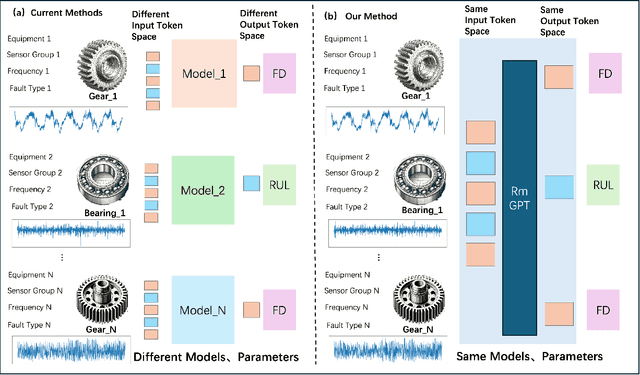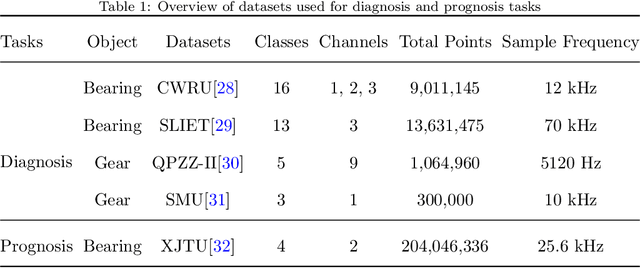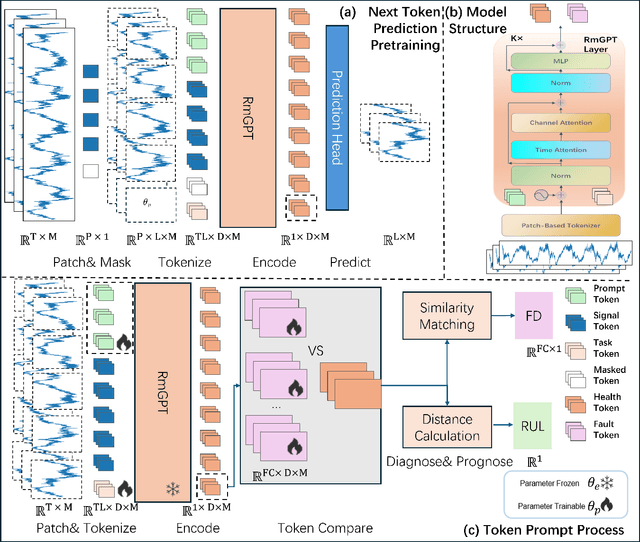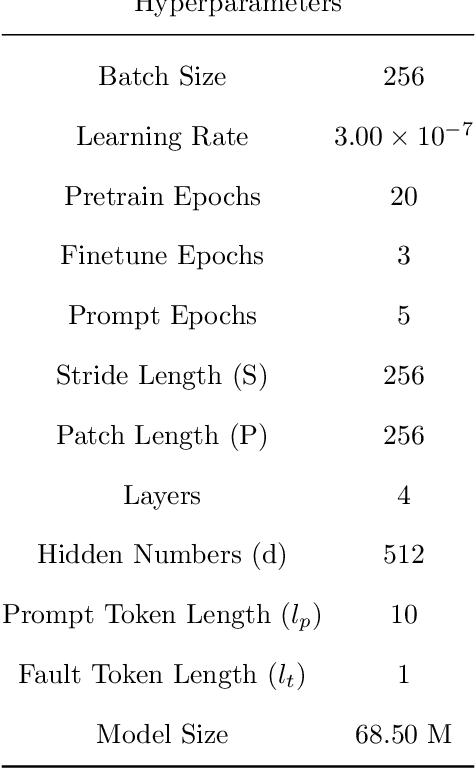Yilin Wang
Driving behavior recognition via self-discovery learning
Mar 18, 2025Abstract:Autonomous driving systems require a deep understanding of human driving behaviors to achieve higher intelligence and safety.Despite advancements in deep learning, challenges such as long-tail distribution due to scarce samples and confusion from similar behaviors hinder effective driving behavior detection.Existing methods often fail to address sample confusion adequately, as datasets frequently contain ambiguous samples that obscure unique semantic information.
SuperNeRF-GAN: A Universal 3D-Consistent Super-Resolution Framework for Efficient and Enhanced 3D-Aware Image Synthesis
Jan 12, 2025



Abstract:Neural volume rendering techniques, such as NeRF, have revolutionized 3D-aware image synthesis by enabling the generation of images of a single scene or object from various camera poses. However, the high computational cost of NeRF presents challenges for synthesizing high-resolution (HR) images. Most existing methods address this issue by leveraging 2D super-resolution, which compromise 3D-consistency. Other methods propose radiance manifolds or two-stage generation to achieve 3D-consistent HR synthesis, yet they are limited to specific synthesis tasks, reducing their universality. To tackle these challenges, we propose SuperNeRF-GAN, a universal framework for 3D-consistent super-resolution. A key highlight of SuperNeRF-GAN is its seamless integration with NeRF-based 3D-aware image synthesis methods and it can simultaneously enhance the resolution of generated images while preserving 3D-consistency and reducing computational cost. Specifically, given a pre-trained generator capable of producing a NeRF representation such as tri-plane, we first perform volume rendering to obtain a low-resolution image with corresponding depth and normal map. Then, we employ a NeRF Super-Resolution module which learns a network to obtain a high-resolution NeRF. Next, we propose a novel Depth-Guided Rendering process which contains three simple yet effective steps, including the construction of a boundary-correct multi-depth map through depth aggregation, a normal-guided depth super-resolution and a depth-guided NeRF rendering. Experimental results demonstrate the superior efficiency, 3D-consistency, and quality of our approach. Additionally, ablation studies confirm the effectiveness of our proposed components.
SLAM: Towards Efficient Multilingual Reasoning via Selective Language Alignment
Jan 07, 2025Abstract:Despite the significant improvements achieved by large language models (LLMs) in English reasoning tasks, these models continue to struggle with multilingual reasoning. Recent studies leverage a full-parameter and two-stage training paradigm to teach models to first understand non-English questions and then reason. However, this method suffers from both substantial computational resource computing and catastrophic forgetting. The fundamental cause is that, with the primary goal of enhancing multilingual comprehension, an excessive number of irrelevant layers and parameters are tuned during the first stage. Given our findings that the representation learning of languages is merely conducted in lower-level layers, we propose an efficient multilingual reasoning alignment approach that precisely identifies and fine-tunes the layers responsible for handling multilingualism. Experimental results show that our method, SLAM, only tunes 6 layers' feed-forward sub-layers including 6.5-8% of all parameters within 7B and 13B LLMs, achieving superior average performance than all strong baselines across 10 languages. Meanwhile, SLAM only involves one training stage, reducing training time by 4.1-11.9 compared to the two-stage method.
Efficient and Scalable Deep Reinforcement Learning for Mean Field Control Games
Dec 28, 2024



Abstract:Mean Field Control Games (MFCGs) provide a powerful theoretical framework for analyzing systems of infinitely many interacting agents, blending elements from Mean Field Games (MFGs) and Mean Field Control (MFC). However, solving the coupled Hamilton-Jacobi-Bellman and Fokker-Planck equations that characterize MFCG equilibria remains a significant computational challenge, particularly in high-dimensional or complex environments. This paper presents a scalable deep Reinforcement Learning (RL) approach to approximate equilibrium solutions of MFCGs. Building on previous works, We reformulate the infinite-agent stochastic control problem as a Markov Decision Process, where each representative agent interacts with the evolving mean field distribution. We use the actor-critic based algorithm from a previous paper (Angiuli et.al., 2024) as the baseline and propose several versions of more scalable and efficient algorithms, utilizing techniques including parallel sample collection (batching); mini-batching; target network; proximal policy optimization (PPO); generalized advantage estimation (GAE); and entropy regularization. By leveraging these techniques, we effectively improved the efficiency, scalability, and training stability of the baseline algorithm. We evaluate our method on a linear-quadratic benchmark problem, where an analytical solution to the MFCG equilibrium is available. Our results show that some versions of our proposed approach achieve faster convergence and closely approximate the theoretical optimum, outperforming the baseline algorithm by an order of magnitude in sample efficiency. Our work lays the foundation for adapting deep RL to solve more complicated MFCGs closely related to real life, such as large-scale autonomous transportation systems, multi-firm economic competition, and inter-bank borrowing problems.
An Ensemble Approach to Short-form Video Quality Assessment Using Multimodal LLM
Dec 24, 2024Abstract:The rise of short-form videos, characterized by diverse content, editing styles, and artifacts, poses substantial challenges for learning-based blind video quality assessment (BVQA) models. Multimodal large language models (MLLMs), renowned for their superior generalization capabilities, present a promising solution. This paper focuses on effectively leveraging a pretrained MLLM for short-form video quality assessment, regarding the impacts of pre-processing and response variability, and insights on combining the MLLM with BVQA models. We first investigated how frame pre-processing and sampling techniques influence the MLLM's performance. Then, we introduced a lightweight learning-based ensemble method that adaptively integrates predictions from the MLLM and state-of-the-art BVQA models. Our results demonstrated superior generalization performance with the proposed ensemble approach. Furthermore, the analysis of content-aware ensemble weights highlighted that some video characteristics are not fully represented by existing BVQA models, revealing potential directions to improve BVQA models further.
UniReal: Universal Image Generation and Editing via Learning Real-world Dynamics
Dec 10, 2024



Abstract:We introduce UniReal, a unified framework designed to address various image generation and editing tasks. Existing solutions often vary by tasks, yet share fundamental principles: preserving consistency between inputs and outputs while capturing visual variations. Inspired by recent video generation models that effectively balance consistency and variation across frames, we propose a unifying approach that treats image-level tasks as discontinuous video generation. Specifically, we treat varying numbers of input and output images as frames, enabling seamless support for tasks such as image generation, editing, customization, composition, etc. Although designed for image-level tasks, we leverage videos as a scalable source for universal supervision. UniReal learns world dynamics from large-scale videos, demonstrating advanced capability in handling shadows, reflections, pose variation, and object interaction, while also exhibiting emergent capability for novel applications.
FINECAPTION: Compositional Image Captioning Focusing on Wherever You Want at Any Granularity
Nov 23, 2024



Abstract:The advent of large Vision-Language Models (VLMs) has significantly advanced multimodal tasks, enabling more sophisticated and accurate reasoning across various applications, including image and video captioning, visual question answering, and cross-modal retrieval. Despite their superior capabilities, VLMs struggle with fine-grained image regional composition information perception. Specifically, they have difficulty accurately aligning the segmentation masks with the corresponding semantics and precisely describing the compositional aspects of the referred regions. However, compositionality - the ability to understand and generate novel combinations of known visual and textual components - is critical for facilitating coherent reasoning and understanding across modalities by VLMs. To address this issue, we propose FINECAPTION, a novel VLM that can recognize arbitrary masks as referential inputs and process high-resolution images for compositional image captioning at different granularity levels. To support this endeavor, we introduce COMPOSITIONCAP, a new dataset for multi-grained region compositional image captioning, which introduces the task of compositional attribute-aware regional image captioning. Empirical results demonstrate the effectiveness of our proposed model compared to other state-of-the-art VLMs. Additionally, we analyze the capabilities of current VLMs in recognizing various visual prompts for compositional region image captioning, highlighting areas for improvement in VLM design and training.
RegionGrasp: A Novel Task for Contact Region Controllable Hand Grasp Generation
Oct 10, 2024



Abstract:Can machine automatically generate multiple distinct and natural hand grasps, given specific contact region of an object in 3D? This motivates us to consider a novel task of \textit{Region Controllable Hand Grasp Generation (RegionGrasp)}, as follows: given as input a 3D object, together with its specific surface area selected as the intended contact region, to generate a diverse set of plausible hand grasps of the object, where the thumb finger tip touches the object surface on the contact region. To address this task, RegionGrasp-CVAE is proposed, which consists of two main parts. First, to enable contact region-awareness, we propose ConditionNet as the condition encoder that includes in it a transformer-backboned object encoder, O-Enc; a pretraining strategy is adopted by O-Enc, where the point patches of object surface are randomly masked off and subsequently restored, to further capture surface geometric information of the object. Second, to realize interaction awareness, HOINet is introduced to encode hand-object interaction features by entangling high-level hand features with embedded object features through geometric-aware multi-head cross attention. Empirical evaluations demonstrate the effectiveness of our approach qualitatively and quantitatively where it is shown to compare favorably with respect to the state of the art methods.
RmGPT: Rotating Machinery Generative Pretrained Model
Sep 26, 2024



Abstract:In industry, the reliability of rotating machinery is critical for production efficiency and safety. Current methods of Prognostics and Health Management (PHM) often rely on task-specific models, which face significant challenges in handling diverse datasets with varying signal characteristics, fault modes and operating conditions. Inspired by advancements in generative pretrained models, we propose RmGPT, a unified model for diagnosis and prognosis tasks. RmGPT introduces a novel token-based framework, incorporating Signal Tokens, Prompt Tokens, Time-Frequency Task Tokens and Fault Tokens to handle heterogeneous data within a unified model architecture. We leverage self-supervised learning for robust feature extraction and introduce a next signal token prediction pretraining strategy, alongside efficient prompt learning for task-specific adaptation. Extensive experiments demonstrate that RmGPT significantly outperforms state-of-the-art algorithms, achieving near-perfect accuracy in diagnosis tasks and exceptionally low errors in prognosis tasks. Notably, RmGPT excels in few-shot learning scenarios, achieving 92% accuracy in 16-class one-shot experiments, highlighting its adaptability and robustness. This work establishes RmGPT as a powerful PHM foundation model for rotating machinery, advancing the scalability and generalizability of PHM solutions.
GSD: View-Guided Gaussian Splatting Diffusion for 3D Reconstruction
Jul 05, 2024Abstract:We present GSD, a diffusion model approach based on Gaussian Splatting (GS) representation for 3D object reconstruction from a single view. Prior works suffer from inconsistent 3D geometry or mediocre rendering quality due to improper representations. We take a step towards resolving these shortcomings by utilizing the recent state-of-the-art 3D explicit representation, Gaussian Splatting, and an unconditional diffusion model. This model learns to generate 3D objects represented by sets of GS ellipsoids. With these strong generative 3D priors, though learning unconditionally, the diffusion model is ready for view-guided reconstruction without further model fine-tuning. This is achieved by propagating fine-grained 2D features through the efficient yet flexible splatting function and the guided denoising sampling process. In addition, a 2D diffusion model is further employed to enhance rendering fidelity, and improve reconstructed GS quality by polishing and re-using the rendered images. The final reconstructed objects explicitly come with high-quality 3D structure and texture, and can be efficiently rendered in arbitrary views. Experiments on the challenging real-world CO3D dataset demonstrate the superiority of our approach.
 Add to Chrome
Add to Chrome Add to Firefox
Add to Firefox Add to Edge
Add to Edge